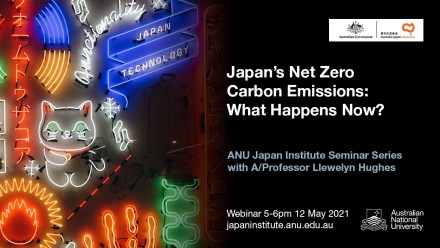Japan’s Net Zero Carbon Emissions: What Happens Now?
Last month Prime Minister Yoshihide Suga committed Japan to reducing its greenhouse gas emissions by 46 percent by 2030, compared to 2013 emissions. The announcement follows his October 2020 commitment to a net-zero emissions target by 2050. Both these goals are far more ambitious than previous commitments that Japan has made. In this session we will discuss with Assoc. Prof Llewelyn Hughes how the Japanese government decided on these new and ambitious targets, how they are being implemented, and what they mean for Australia.
Llewelyn Hughes is Associate Professor at the Crawford School of Public Policy, Australian National University, where he sits on the steering committee of the ANU’s Zero-Carbon Energy for the Asia-Pacific initiative. He works on various aspects of energy transition in the Asia-Pacific, with current interests in the offshore wind power sector. In addition to his academic work Llewelyn also assists companies in the energy and environmental sectors navigate regulatory issues in Japan. He has lived in Japan for more than 10 years, and trained as a simultaneous and consecutive interpreter in the Japanese language.
This event is co-hosted with the ANU Japan Institute.









